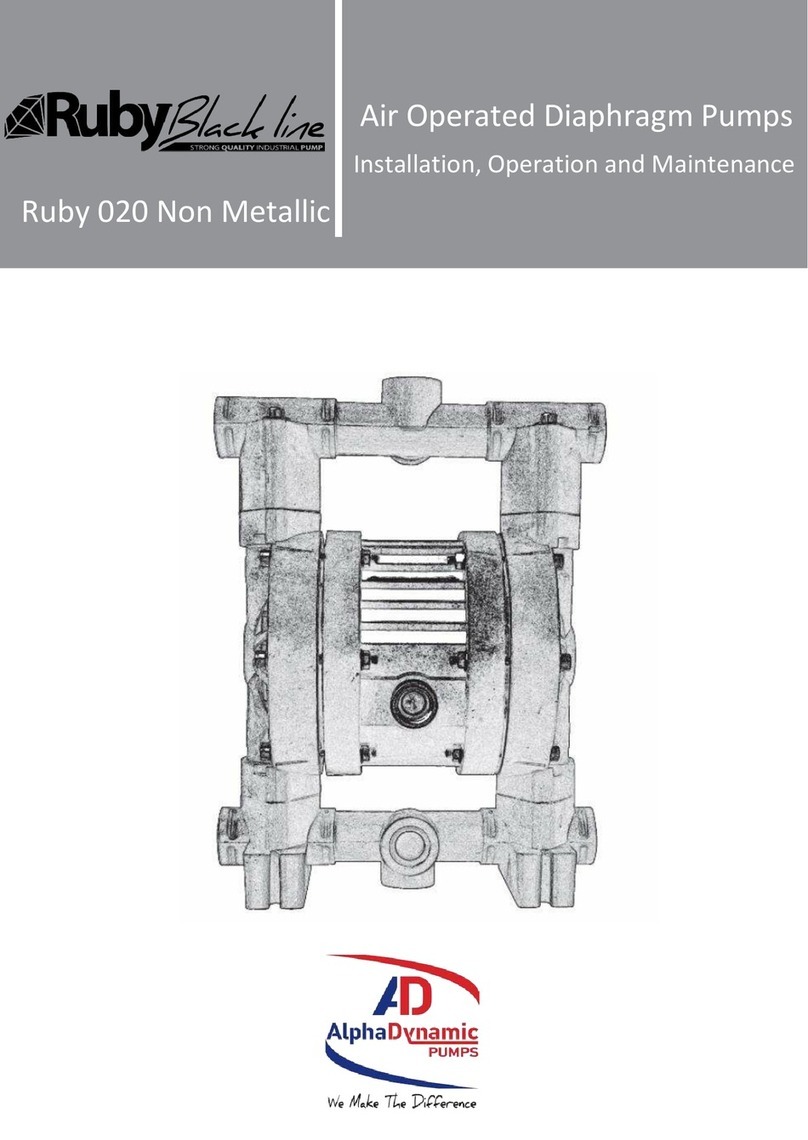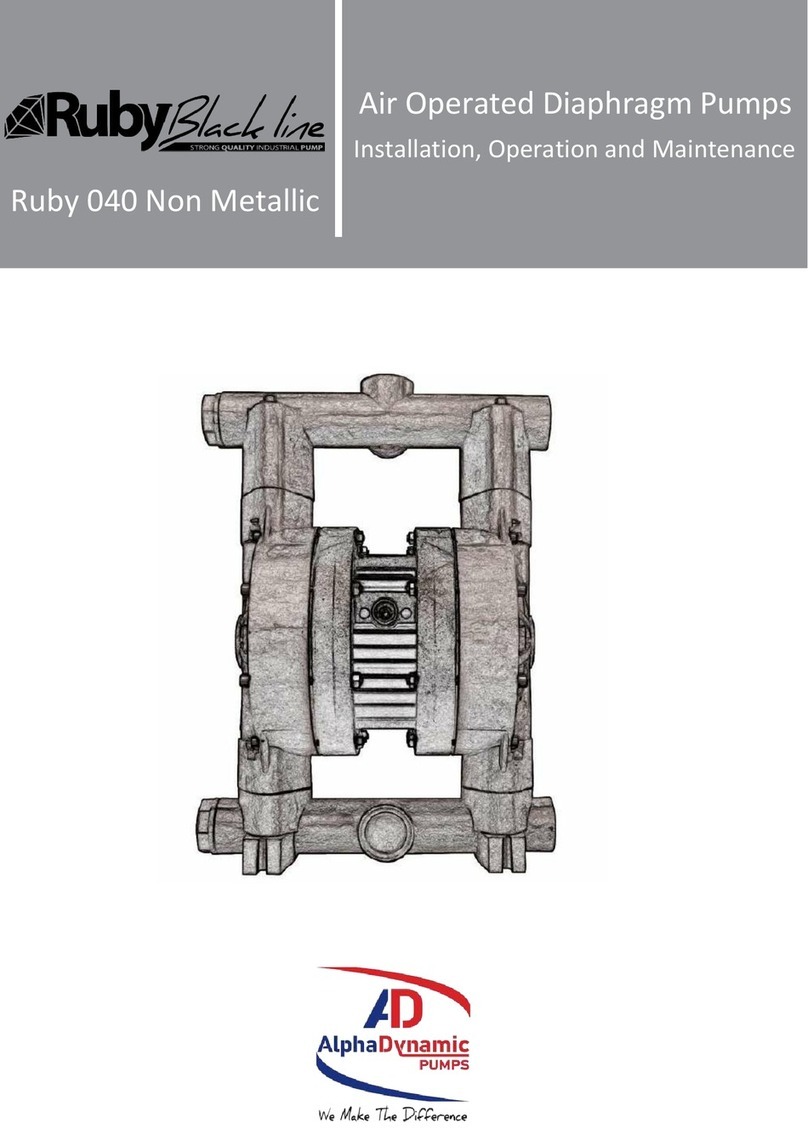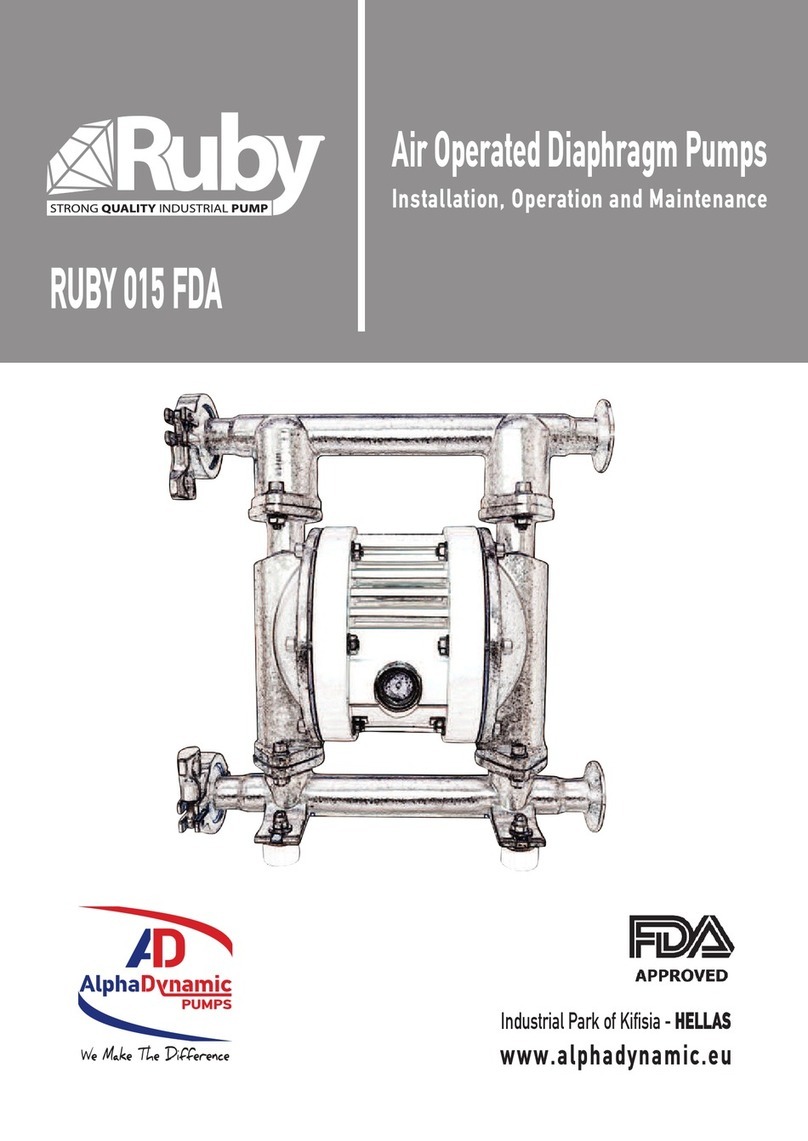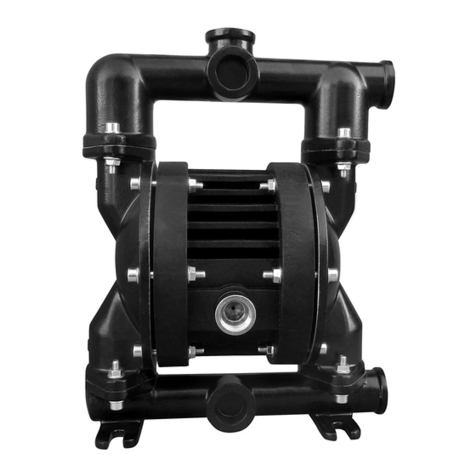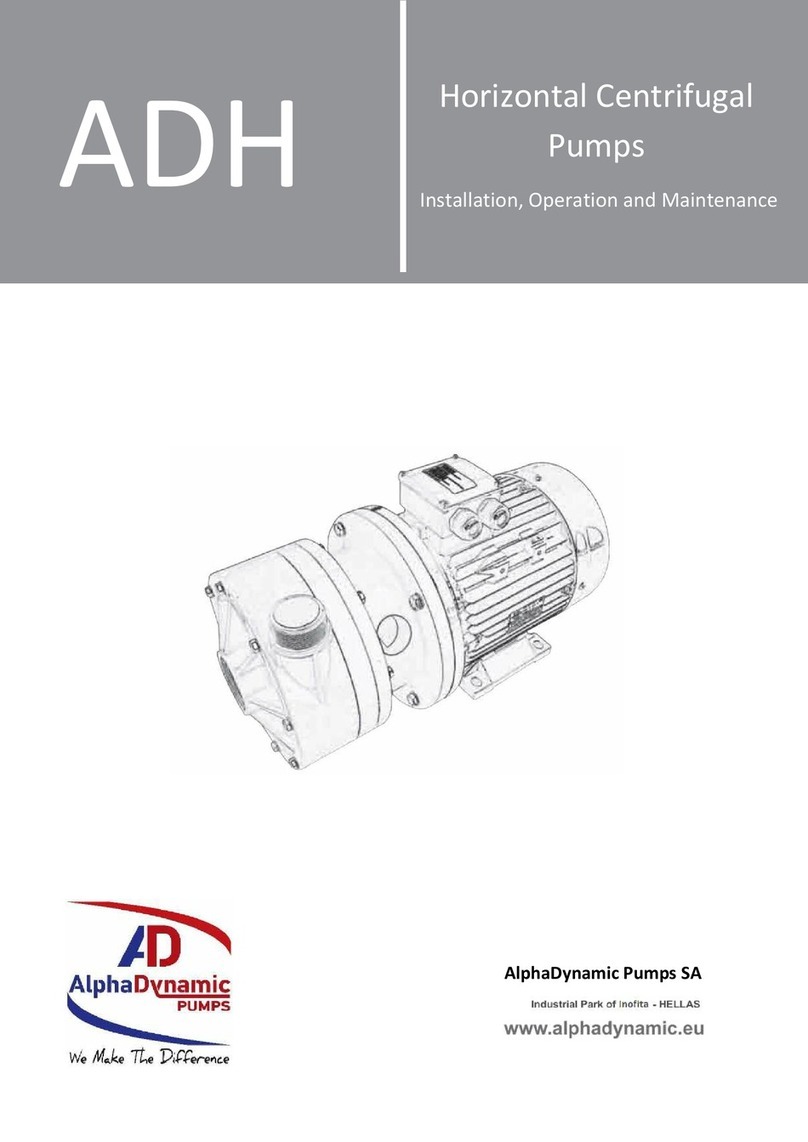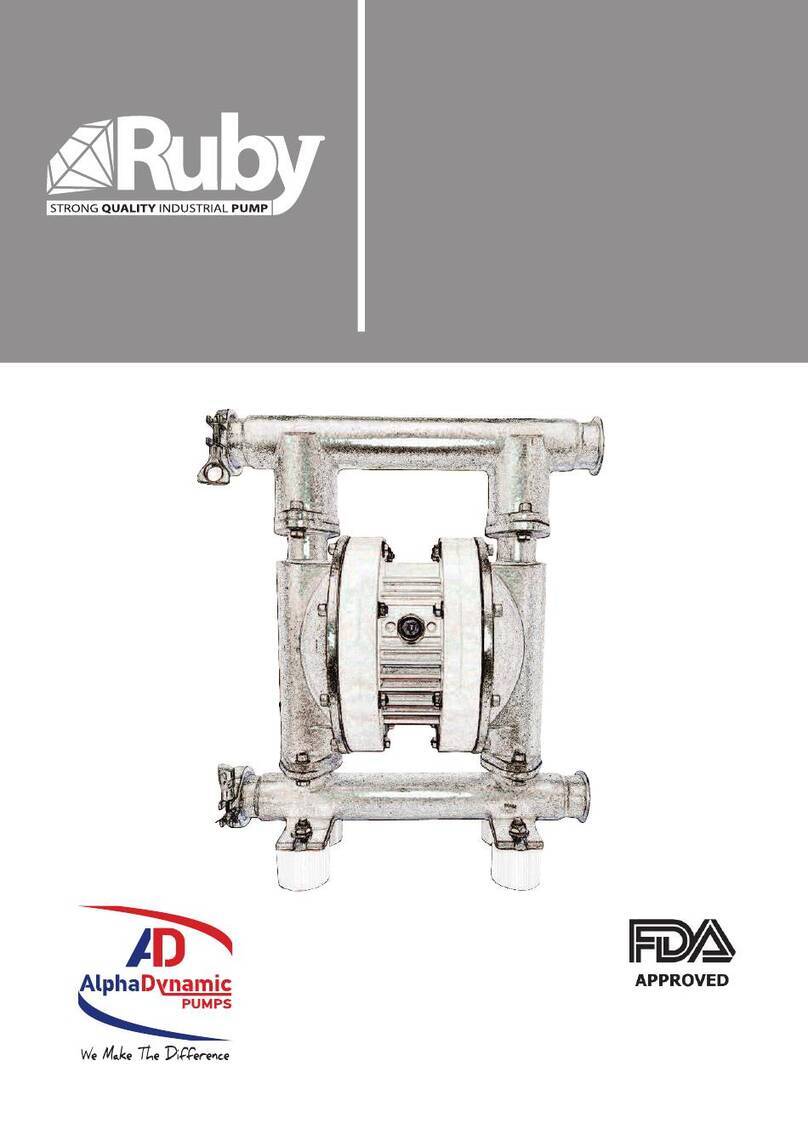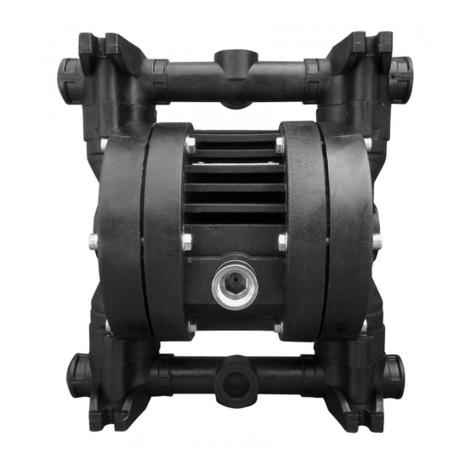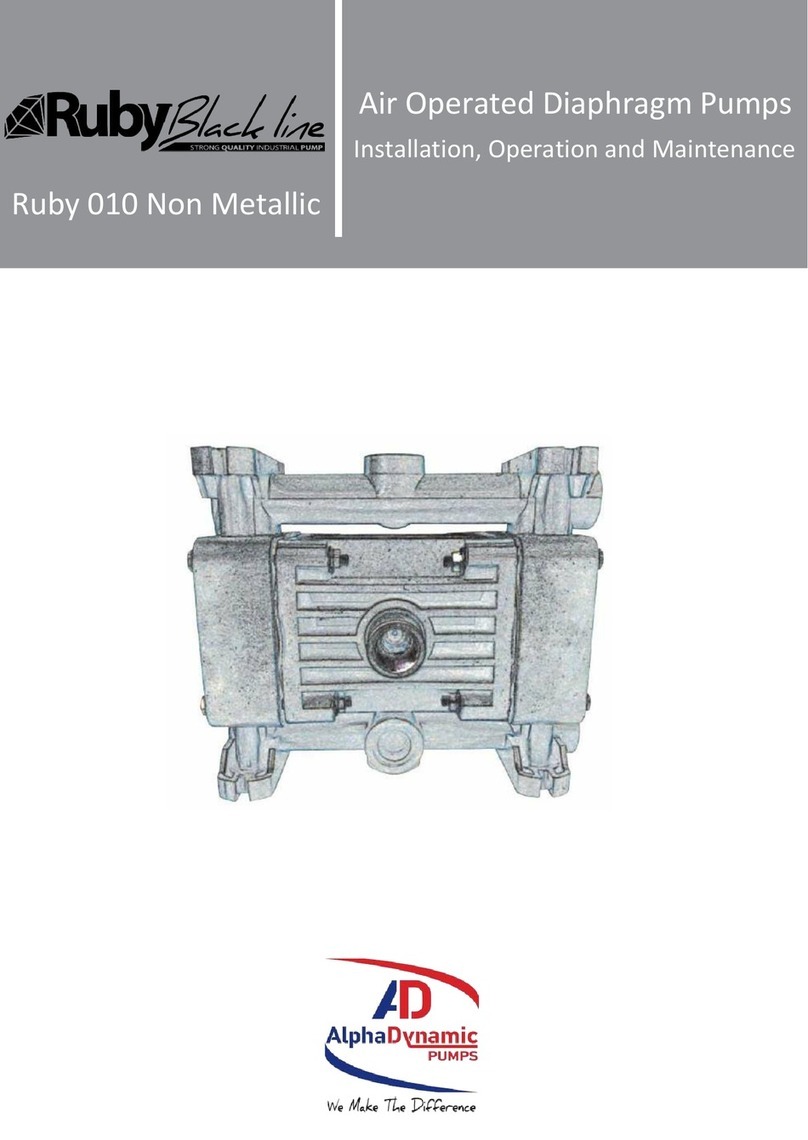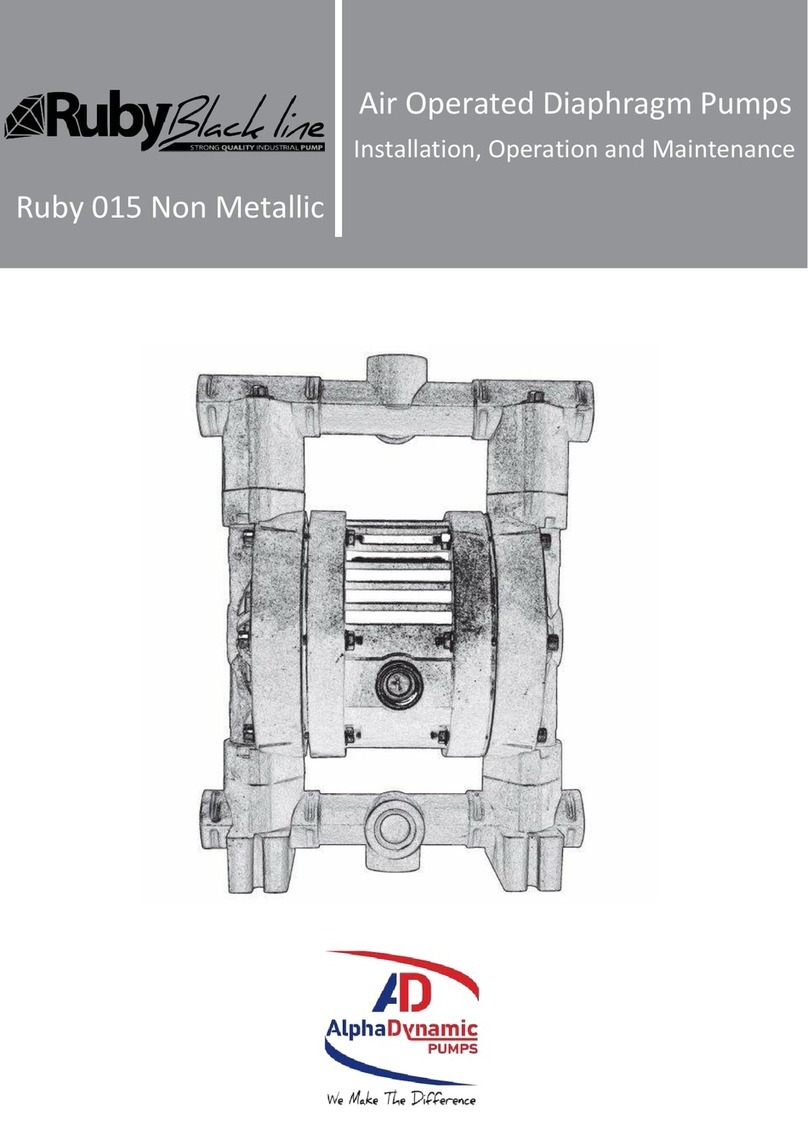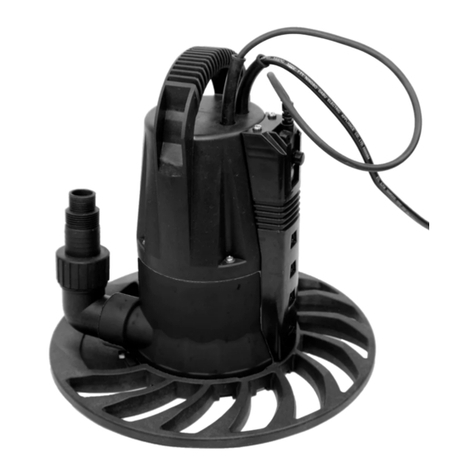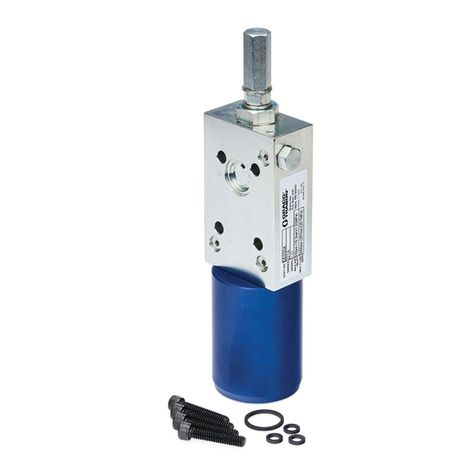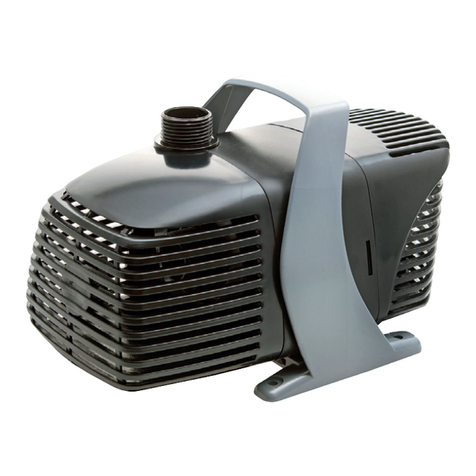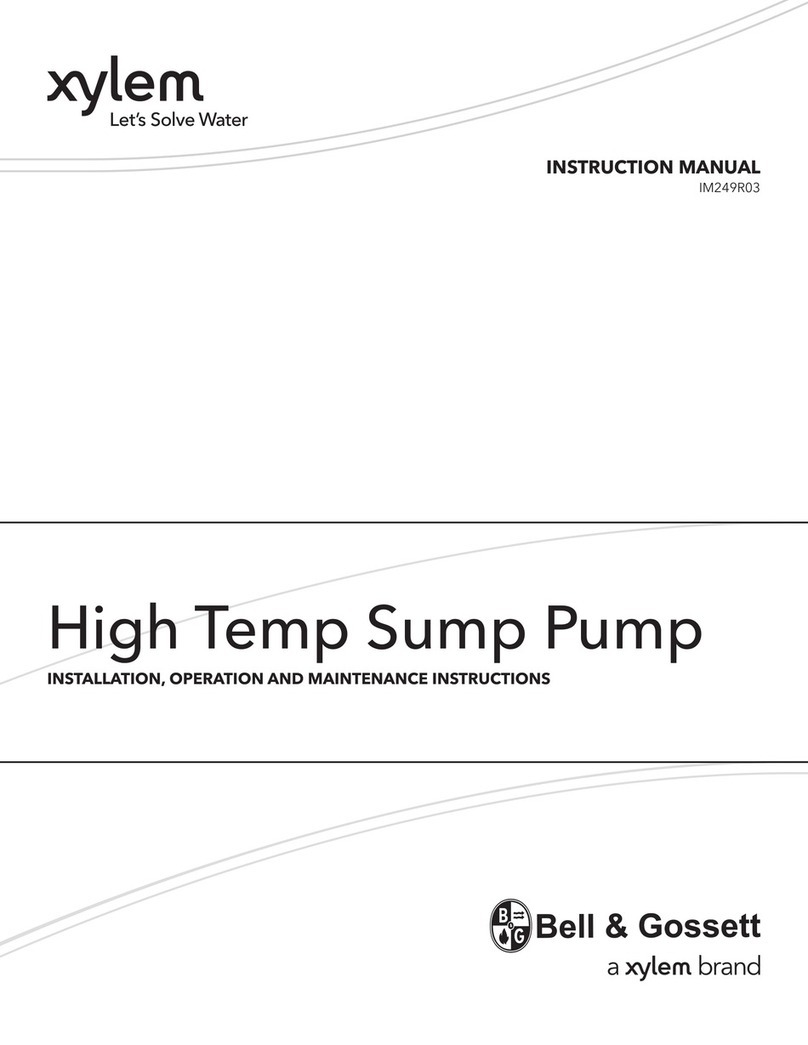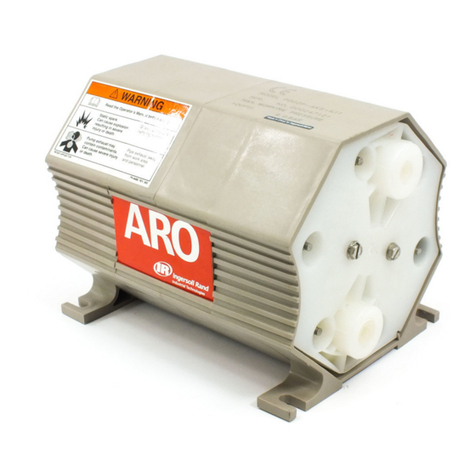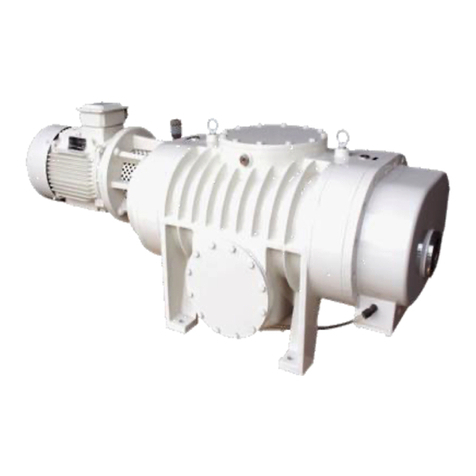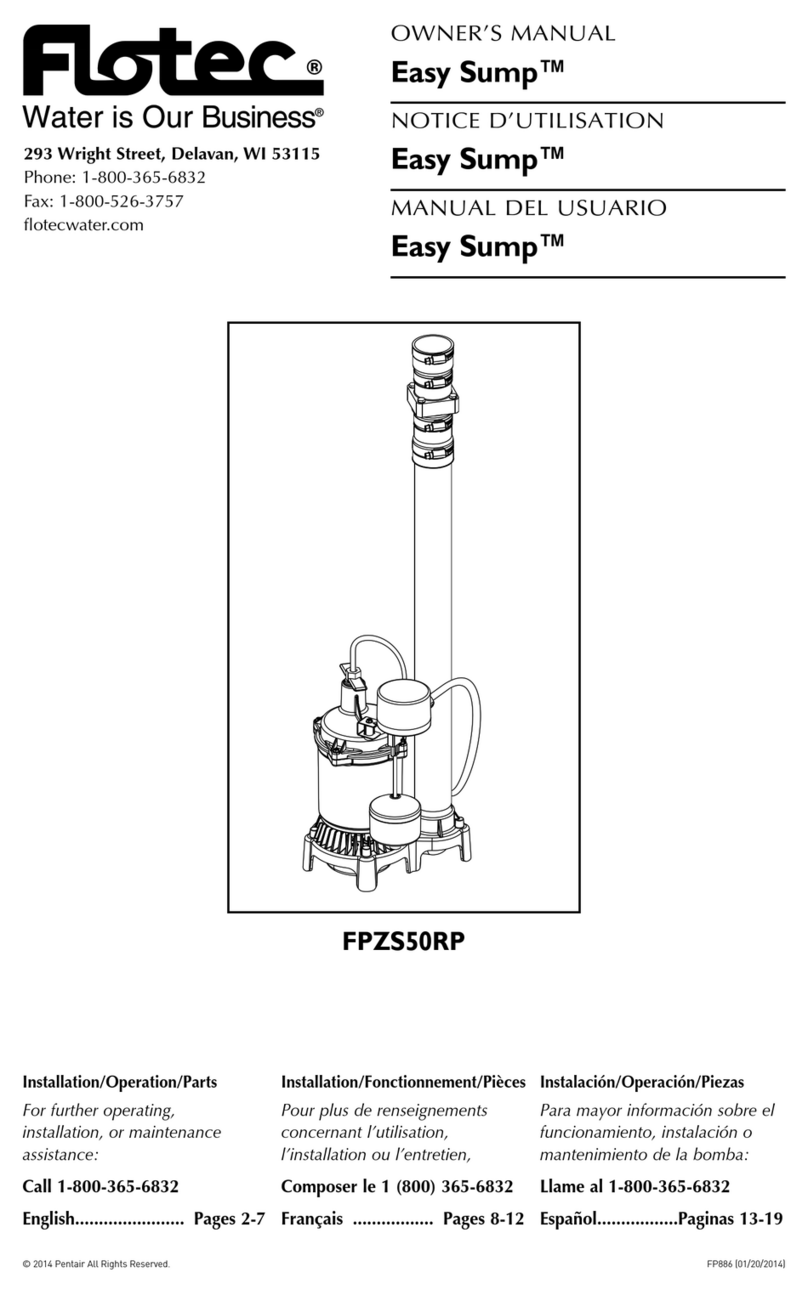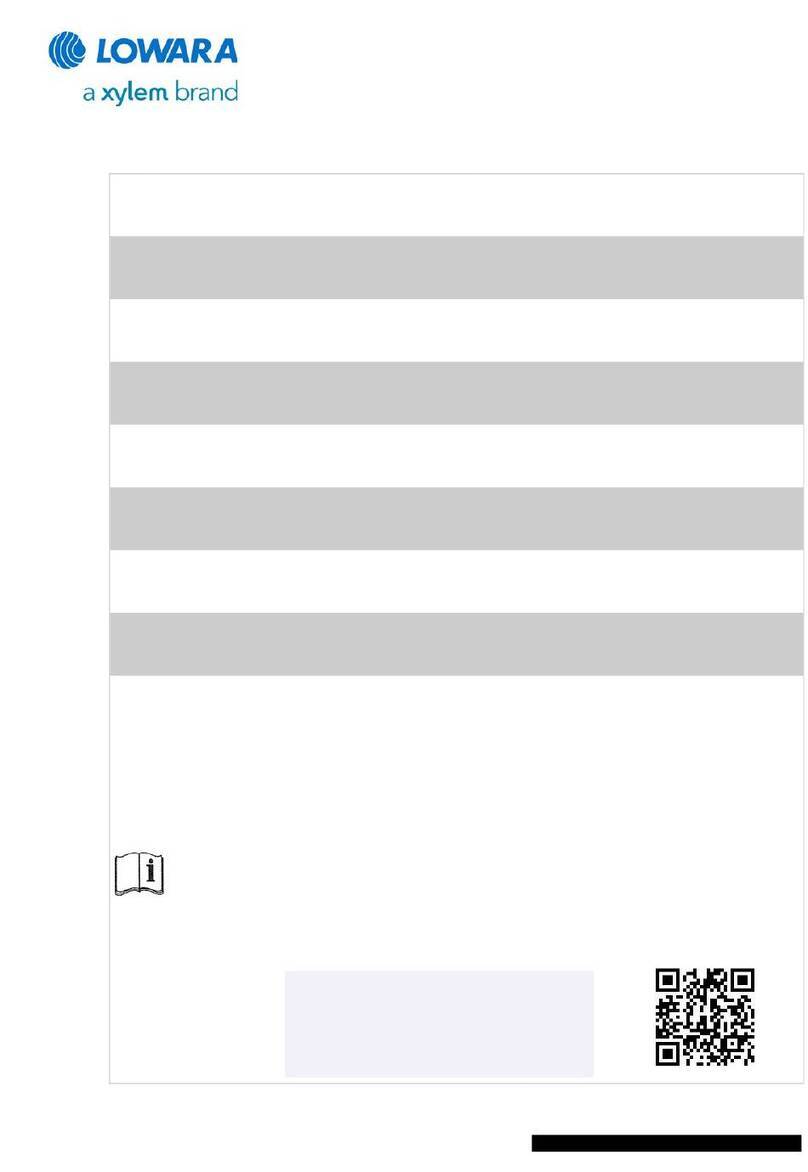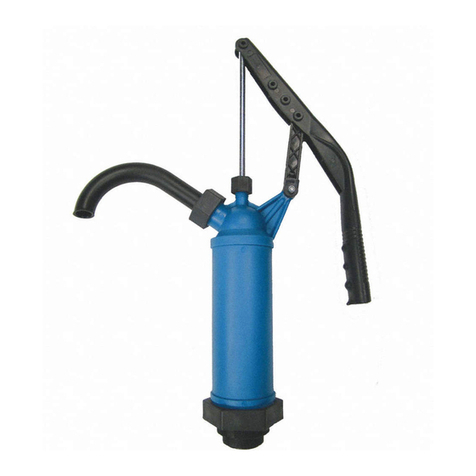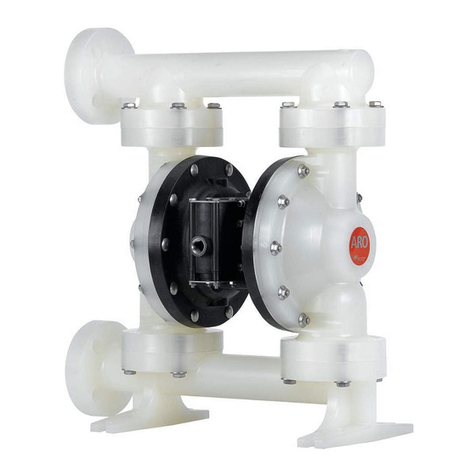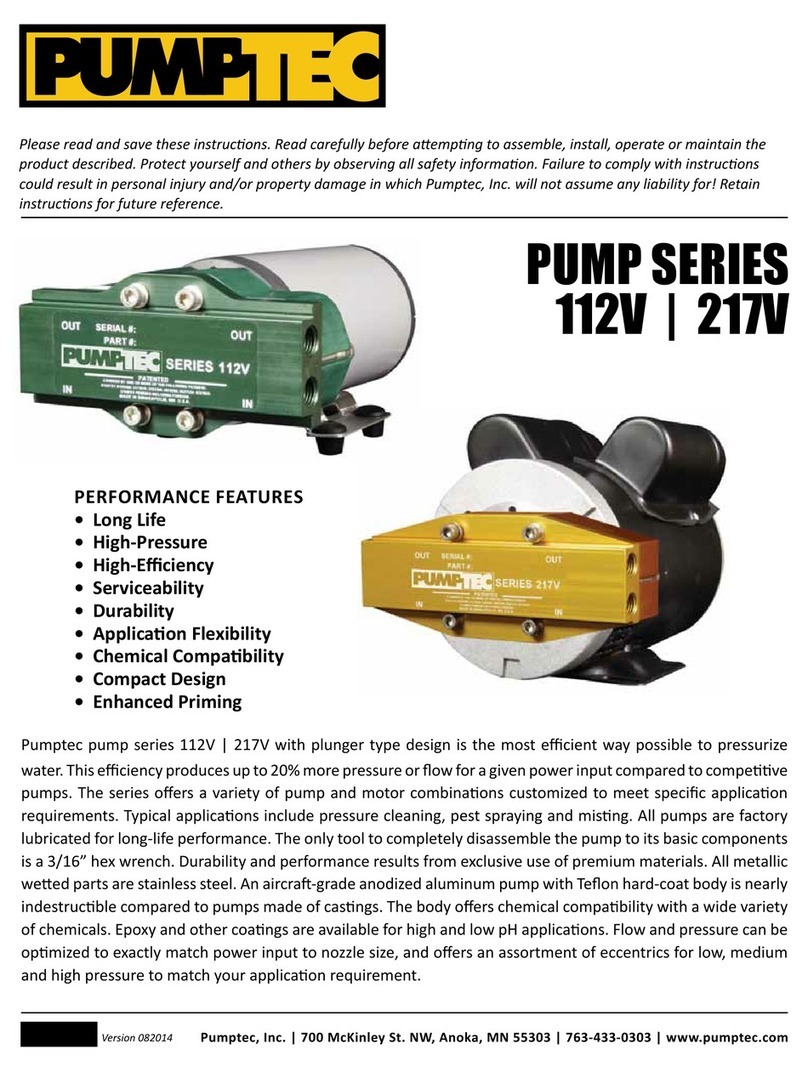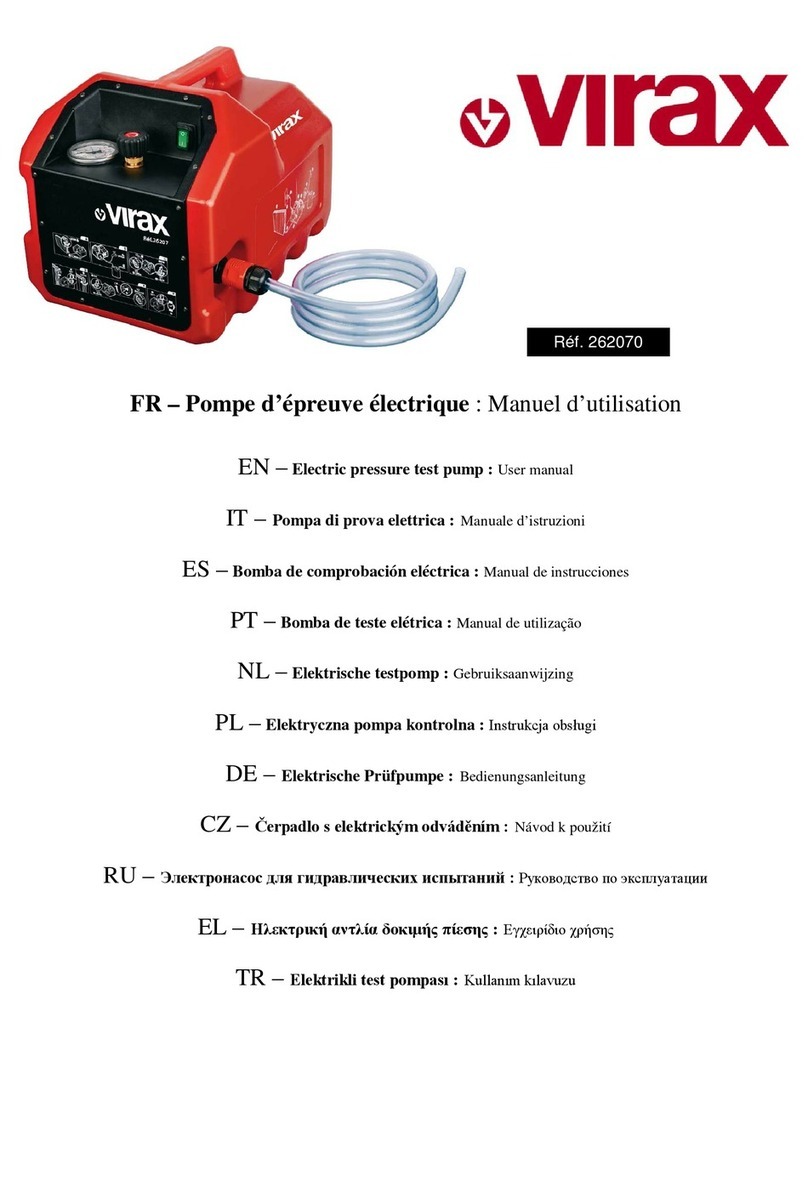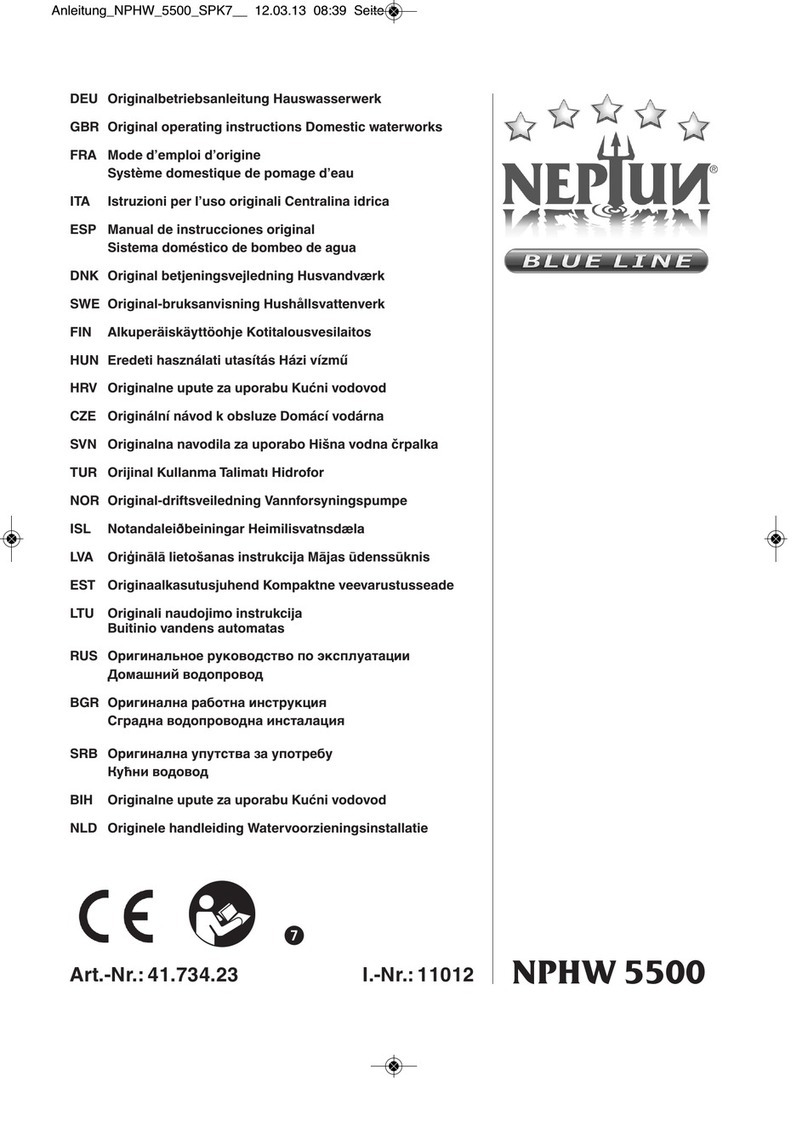
9
For installation and use in a potentially explosive environment, comply with these general precautions
- ascertain that the pump is full and if possible, that the level is above it by 0.5 m;
- ascertain that the fluid treated does not contain or cannot contain large solids or solids of a dangerous shape
- ensure that the intake or delivery ports are not obstructed nor limited to avoid cavitation or pneumatic motor strain.
- also ascertain that the connection piping is strong enough and cannot be deformed by the pump weight or by the intake. Also check
hat the pump is not burdened by the weight of the piping
- If the pump is to stay in disuse for a long period of time, clean it carefully by running a non-flammable liquid detergent through it that
is compatible with the pump's construction materials
- if the pump was turned off for a long period of time, circulate clean water it in for some minutes to avoid incrustations.
- before starting, after long periods of disuse, clean the Internal and external surfaces with a damp cloth;
- check the grounding;
- always protect the pump against possible collisions caused by moving objects or by various blunt materials that may damage it or react
with its materials;
- protect the pump's surrounding ambient from splashes caused by accidental pump failure;
- if the diaphragms are completely torn, the fluid may enter the air circuit, damaging it, and be discharged from the exhaust port. It is
therefore necessary for the exhaust port to be conveyed by pipes to a safe area.
WARNING: the air supply pressure must never be over 7 bar or below 2 bar
WARNING: when using the pump with aggressive or toxic liquids or with liquids that may represent a health hazard you
must install suitable protection on the pump to contain, collect and signal any spills: DANGER OF POLLUTION, CONTAMINATION,
INJURIES AND/OR DEATH.
WARNING: the pump must not be used with fluids that arc not compatible with its construction materials or in a place
containing incompatible fluids.
WARNING: installing the pumps without on off valves on the intake and delivery sides to intercept the product in case of
spillage is forbidden: danger of uncontrolled product spillage
WARNING: installing the pumps without on-off. three way or check valves on the air supply piping to prevent the pumped
liquid from entering the pneumatic circuit if the diaphragms are broken is forbidden: danger of fluid entering the compressed air
circuit and being discharged into the environment
WARNING: Should the user think that the temperature limits set forth in this manual may be exceeded during service, a
protective device must be installed on the system to prevent the maximum allowed process temperature from being reached.
If exceeded, respect of the maximum temperature marked cannot be guaranteed
WARNING: The pumps must always be grounded irrespective of any organ to which they are connected. Lack of grounding
or incorrect grounding will cancel the requirements for safety and protection against the risk of explosion
WARNING: the use of pumps made with non-conductive material, which become charged with static, and without suitable
grounding for flammable liquids is forbidden: RIS OF EXPLOSIONS DUE TO STATIC CHARGE
WARNING: Aggressive, toxic or dangerous liquids may cause serious injuries or damage to health, therefore it is forbidden
to return a pump containing such products to the manufacturer or to a service center. You must empty the internal circuits from
the product first and wash and treat it.
WARNING: Pumps containing aluminium parts or components coming into contact with the product cannot be used to ρump
Ill-trichloroethane, methylene chloride or solvents based on other halogenated hydrocarbons:
DANGER OF AN EXPLOSION CAUSED BY A CHEMICAL REACTION
WARNING: Conductive Polypropylene, conductive PVDF pumps are not to be installed in applications where the pumps
may be subjected to oil, greases and hydraulic liquids
